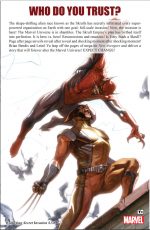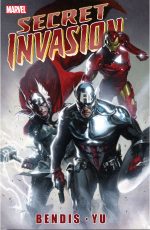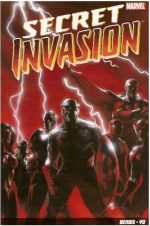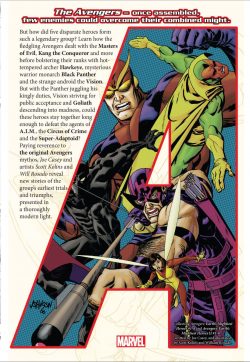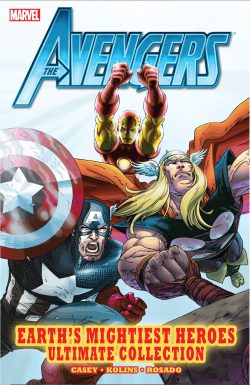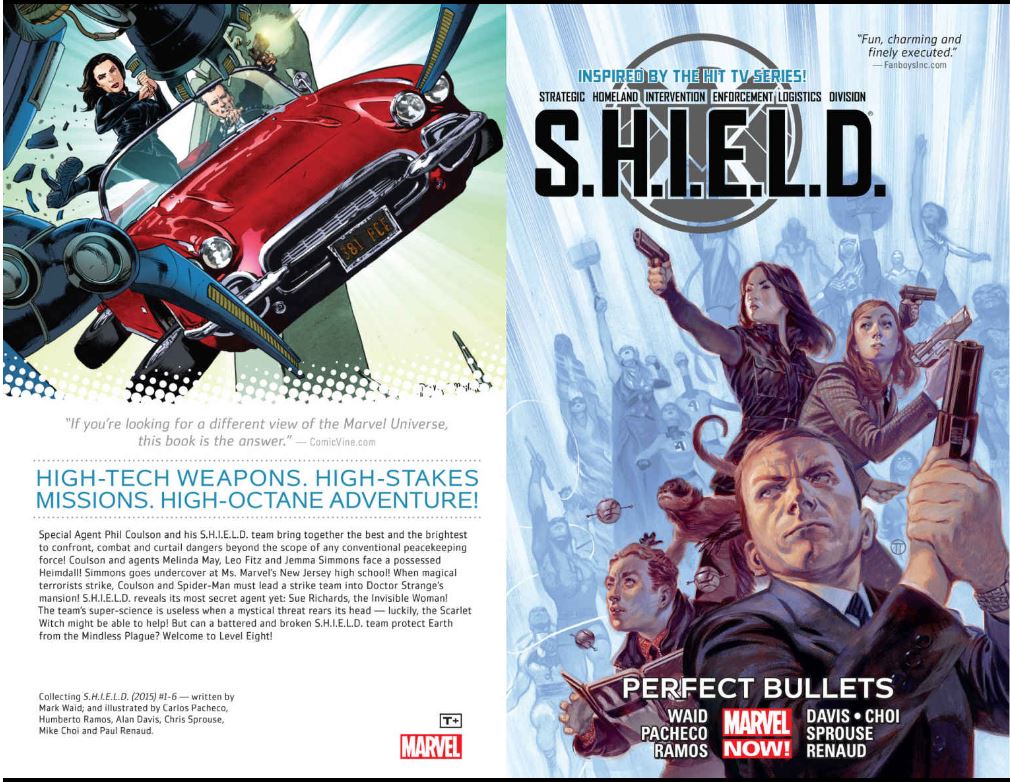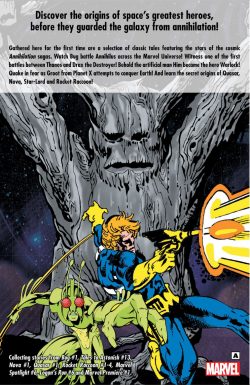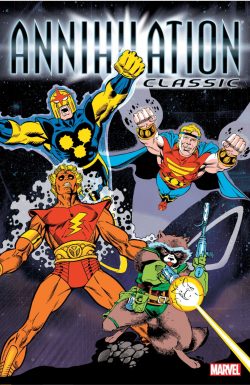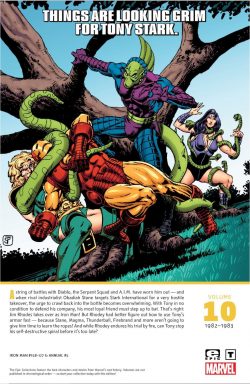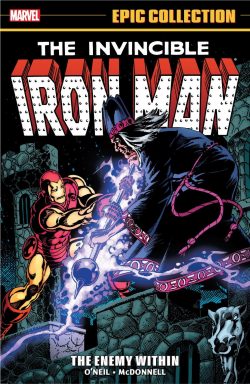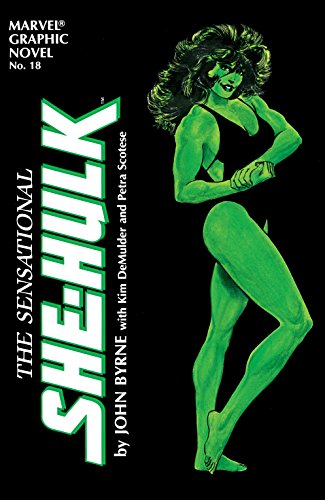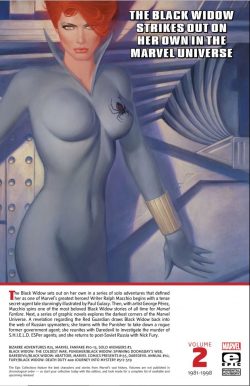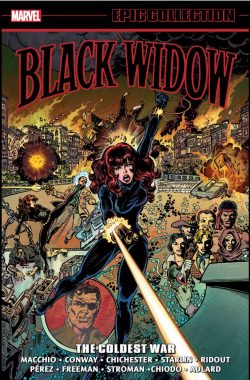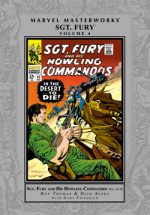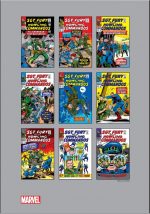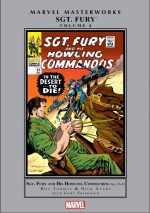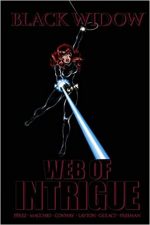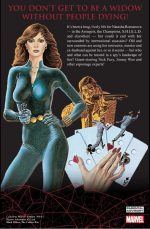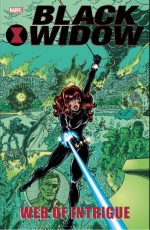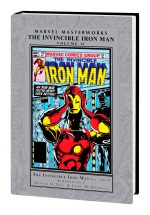
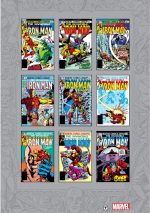
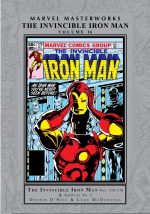
By Denny O’Neil, Roger McKenzie, Peter B. Gillis, Ralph Macchio, Luke McDonnell, Carmine Infantino, Paul Smith, Steve Ditko, Marie Severin, Mike Vosburg, Jerry Bingham, Michael Golden & various (MARVEL)
ISBN: 978-1-3029-4920-4- (HB/Digital edition)
One of Marvel’s biggest global successes thanks to the film franchise, Iron Man celebrated his 60th anniversary in March 2023, so let’s again acknowledge that landmark and all who wear the suits offering more of the same…
Tony Stark is a super-rich supergenius inventor who moonlights as a superhero: wearing a formidable, ever-evolving suit of armour stuffed with his own ingenious creations. The supreme technologist hates to lose and constantly upgrades his gear, making Iron Man one of the most powerful characters in the Marvel Universe. However, in Iron Man #120-128 (March to November 1979), the unrelenting pressure of running a multinational corporation and saving the world on a daily basis resulted in the weary warrior succumbing to the constant temptations of his (originally sham) sybaritic lifestyle. Thus, he helplessly slipped into a glittering world drenched with excessive partying and drinking.
That dereliction was compounded by his armour being usurped by rival Justin Hammer: used to murder an innocent. The ensuing psychological crisis forced Stark to confront the hard fact that he was an alcoholic …and probably an adrenaline junkie too. Landmark story ‘Demon in a Bottle’ saw the traumatised hero plumb the depths of grief and guilt, bury himself in pity, and alienate all his friends and allies before an unlikely intervention forced him to take a long, hard look at his life and actions…
A more cautious, level-headed and wiser man, Stark resumed his high-pressure lives, but he could not let up and the craving never went away. Then in 1982 author/editor Denny O’Neil made him do it again, with the result that Marvel gained another black superhero at long last…
It was the dawn of a period of legacy heroes inheriting mantles, established roles and combat identities from white, mostly male champions, and was certainly a move in the right direction…
This grand and gleaming chronological compendium navigates that transitional period, re-presenting Iron Man #158-170 and material from Iron Man Annual #5 and Marvel Fanfare #4: episodically spanning cover-dates May 1982-May 1983. It’s accompanied by an Introduction from Luke McDonnell at the front and house ads and Direct Sale promo poster by him at the end, as the title experienced many creative personnel shuffles before settling on a stalwart team to tackle the biggest of changes. Also on show are covers by Bob Layton, Smith, Jim Starlin, Ed Hannigan & Al Milgrom, Jerry Bingham & Brett Breeding, McDonnell, Brent Anderson & Steve Mitchell.
Opening with Iron Man #158, O’Neil, Carmine Infantino, Dan Green & Al Milgrom breeze through the motions as a deranged junior genius attacks modern technology from his literal man-cave by tapping the latent psychic power of his ‘Moms’ after which Roger McKenzie, rising art star Paul Smith & inking collective “Diverse Hands” step in to relate what occurs ‘When Strikes Diablo’. Here the Fantastic Four’s alchemical nemesis infiltrates Stark International to steal the techno-wizard’s resources and obsolete suits, only to unleash a mystic menace beyond all control…
With pressure mounting and threats everywhere, the craving for booze painfully manifests in ‘A Cry of Beasts’ – by O’Neil, Steve Ditko, Marie Severin & Green – as Stark’s party-persona collides with hot, willing babes… until an attack on his factory by the sinister Serpent Squad reminds him of his priorities.
Preceding Iron Man Annual #5 – and by O’Neil, McDonnell, Mike Esposito & Steve Mitchell – a brief encounter with new hero Moon Knight sees Stark at odds with rival rich man Steven Grant (one of four people comprising the edgy crusader) in ‘If the Moonman Should Fail!’
Frenemies at first sight, the Golden Avenger and Fist of Khonshu swallow their rich-boy differences to save mutual friends held hostage by Advanced Idea Mechanics, after which the extra-length Annual extravaganza sees Iron Man in Wakanda where The Black Panther must defeat mysteriously resurrected nemesis and determined usurper Eric Killmonger…
Crafted by Peter B. Gillis, Ralph Macchio, Jerry & Bingham & Green, the action-packed ‘War and Remembrance!’ exposes an old foe methodically manoeuvring Stark and Iron Man into an inescapable trap, which closes tighter in Iron Man #162 as O’Neil, Mike Vosburg & Mitchell expose ‘The Menace Within!’ when a trusted employee sabotages S.I.…
There seems to be more than one campaign to crush Stark, and – as O’Neil, McDonnell & Mitchell become the regular creative team – ‘Knight’s Errand!’ opens an extended gambit with another hidden plotter turning ruthless capitalism, corporate raiding, advanced weaponry and an obsession with chess into a war for control of the company.
Up first is fast-flying tech terror The Knight who makes short work of Tony’s bodyguard, pilot, friend and confidante James Rhodes, but the real threat comes from a new acquaintance and future companion, covertly hollowing out Stark at close hand. Rising in the rankings after defeating the hovering horseman, Iron Man barely survives ‘Deadly Blessing’ of The Bishop after his security team digs up leads to the plot in Scotland…
In IM #165, the trail leads to Jamie, Laird of Glen Travail and another deadly duel of devices, where the true purpose is to destabilise Stark by abducting Rhodey in an effort to coerce his capitulation. The resultant ‘Endgame’ seemingly goes Stark’s way, but the battle is fought on many levels by a distanced player secretly commanding the Laird: one with a cruel emotional counterpunch long-prepared to destroy the hero from within…
On ‘One of Those Days…’ old foe The Melter attacks Stark’s New York facility whilst Rhodey still recuperates in Scotland. As Stark yet again faces enforced inactivity in the land of sublime alcoholic beverages, he abruptly abandons his friend to jet home to stop the supervillain. He also learns his brilliant security chief Vic Martinelli has uncovered the identity of one of the hidden players attacking the company: chess grandmaster turned armaments entrepreneur Obadiah Stane…
As Rhodey goes missing again, the newcomer wants all Stark’s creations and, in the most hostile of takeovers, uses every trick in the book – from honey traps to guided missiles and abduction to intoxication – to seize the advantage. ‘The Empty Shell’ sees that nefarious plan bear evil fruit as Stark finally cracks under interminable pressure and one last betrayal, leading to a crushing fall “off the wagon” and into the gutter in ‘The Iron Scream’.
Permanently drunk and deprived of all judgement, Stark dons his armour to clash with Machine Man, even as far away, Rhodey makes his own life-threatening break for freedom and home…
As chaos ensues at Stark’s plant, a major player debuts in the form of junior employee and minor boffin Morley Erwin: on hand for Stark’s reunion with Rhodey and an aghast witness to one of the smartest men alive crawling into a bottle and trying to drown away his pain…
That process begins in #169 as ‘Blackout!’ sees Stark simply give up when confronted by volcanic B-list villain Magma, and sleep through the moment Jim Rhodes steps up – and into – the role and armour of Iron Man…
The new era properly begins in #170’s ‘And Who Shall Clothe Himself in Iron?’ (cover-dated May 1983) as the former military airman promotes Erwin to tech support adviser to help him pilot the most complex weapon he’s ever used to defeat Magma and save a far from grateful Tony Stark…
The Beginning…
Rounding off the wonderment is a short tale by Michael Golden as originally seen in Marvel Fanfare #4 (September 1982) wherein Stark battles his dreams, inner demons and incalculable pride…
As comics companies sought to course correct old attitudes and adapt their wares to a far wider and more diverse readership than they had previously acknowledged, some rash rushed decisions were made that did not suit all the fans. Thankfully, that never stopped the editors and publishers from trying and the wonderful results are here and everywhere in comics because of it. Go read and enjoy and see how it all began to change.
© 2023 MARVEL.

